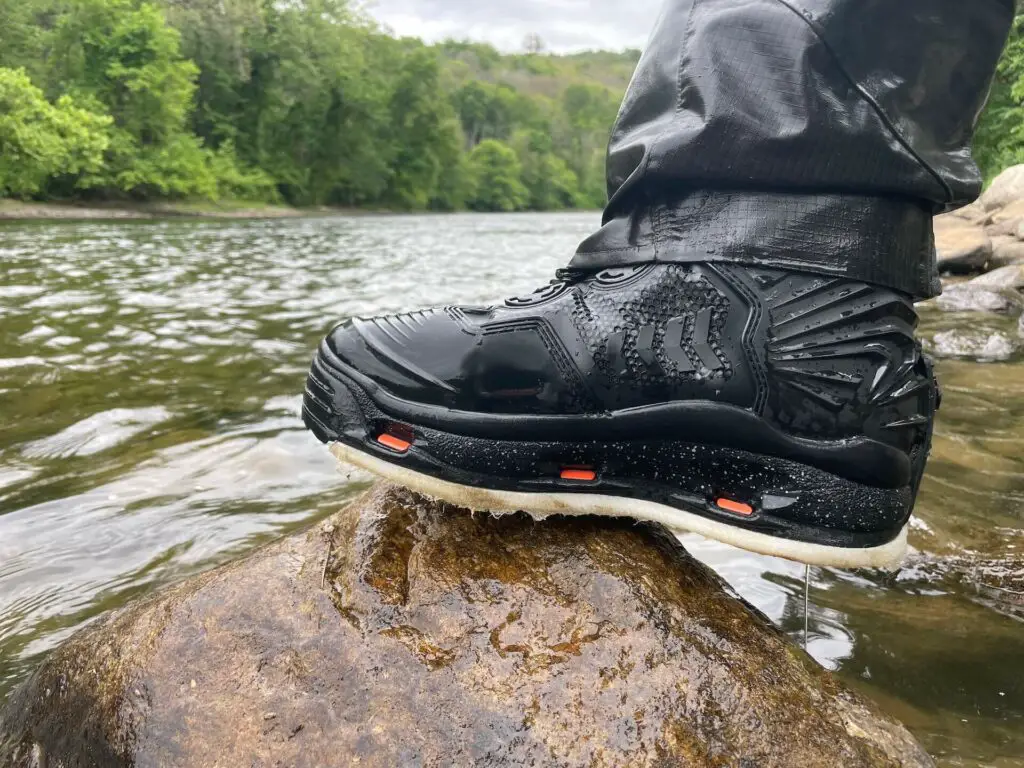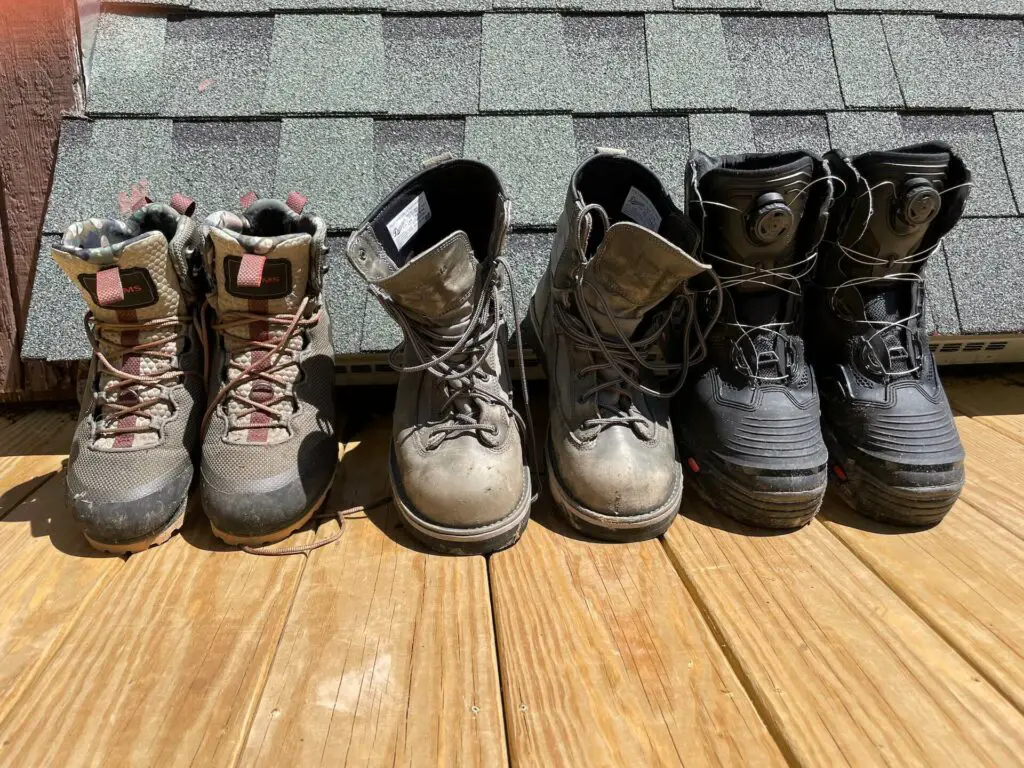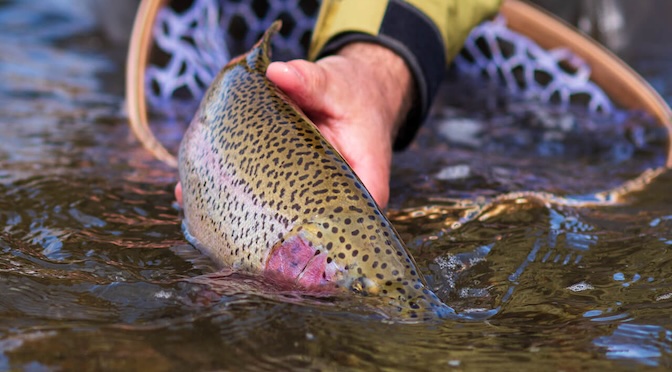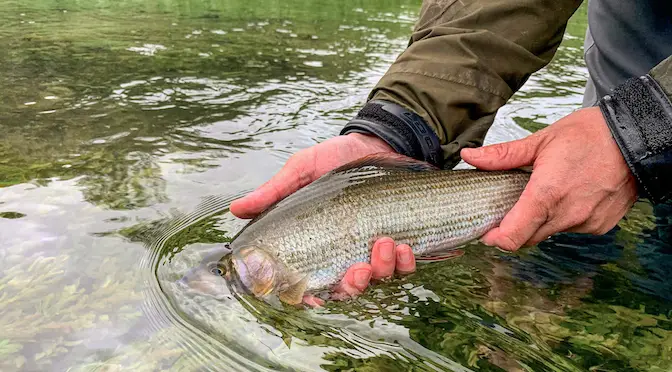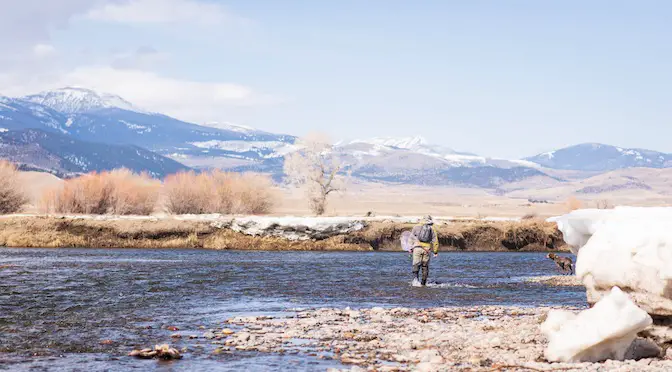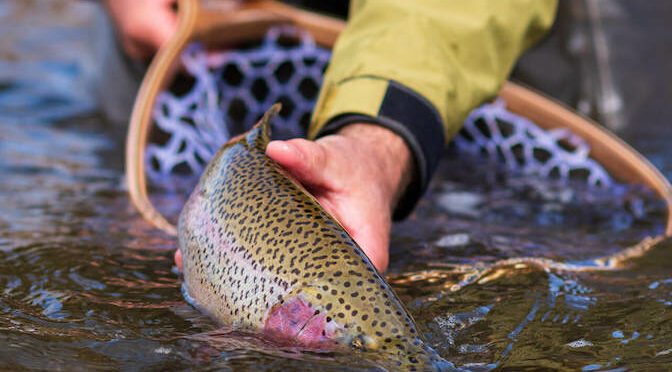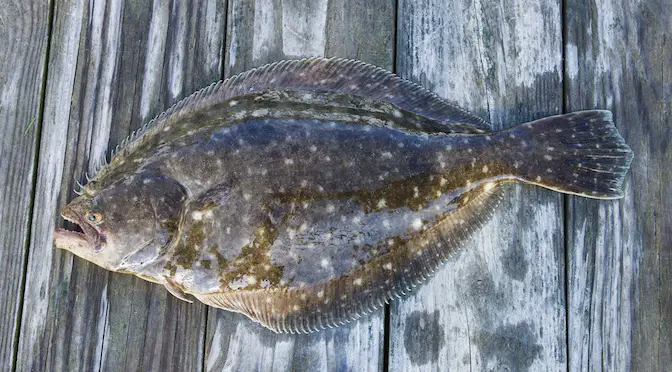- On the Water with the Korkers Bantam Lite - June 26, 2025
- How to Find Trout in Rivers & Streams Anywhere - June 13, 2025
- Educating the Next Generation of Salmon Anglers - June 4, 2025
Selecting the right size for your wading boots is crucial to preparing for any fishing adventure.
These specialized boots, designed to be worn over stockingfoot waders, are vital in ensuring comfort, protection, and stability as you navigate various aquatic environments.
The stockingfoot waders, extending from the foot to the chest, are waterproof and breathable materials designed to keep you dry and comfortable. However, the effectiveness of these waders is significantly enhanced when paired with the perfect-sized wading boots.
How to choose the right size for wading boots is not just a question of comfort—it’s also a matter of safety. In this guide, we’ll outline the essential steps and considerations you need to be aware of when selecting the right boot size. Now, without further ado, let’s dive deeper into the details of picking the perfectly-sized wading boots for your needs!
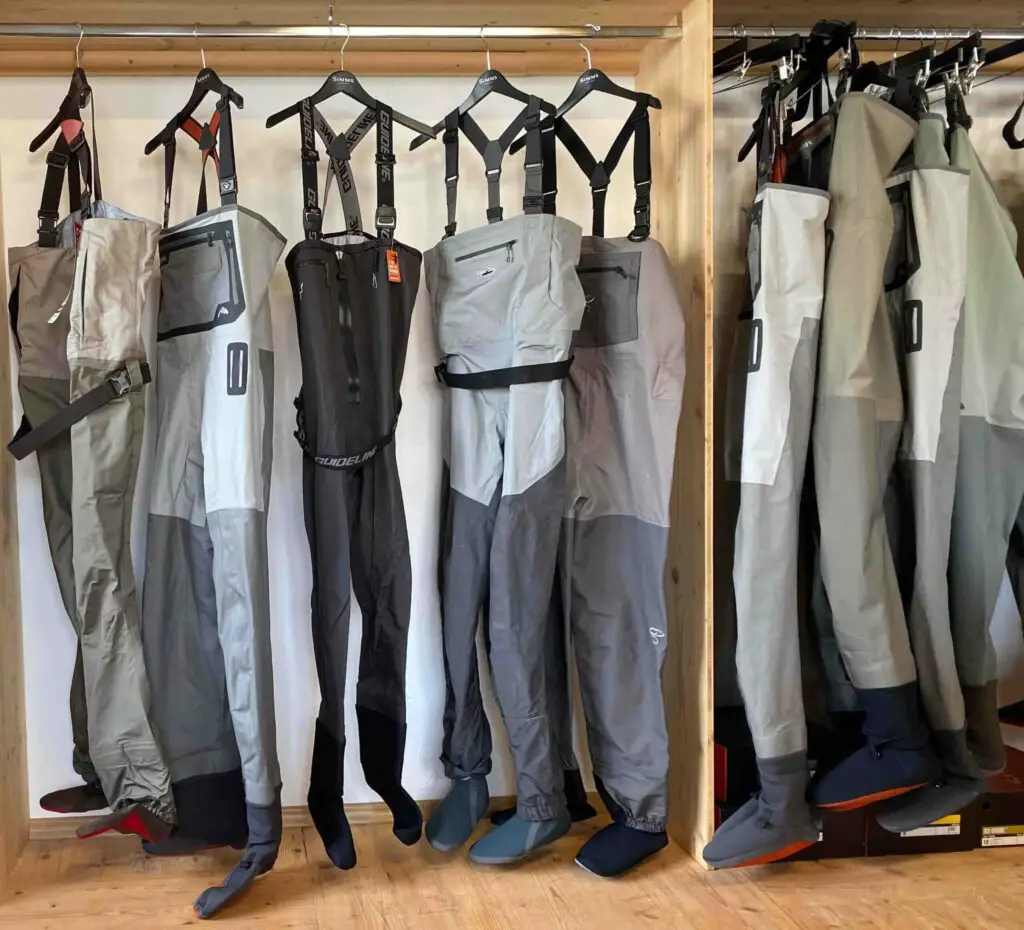
Understanding Wading Boots
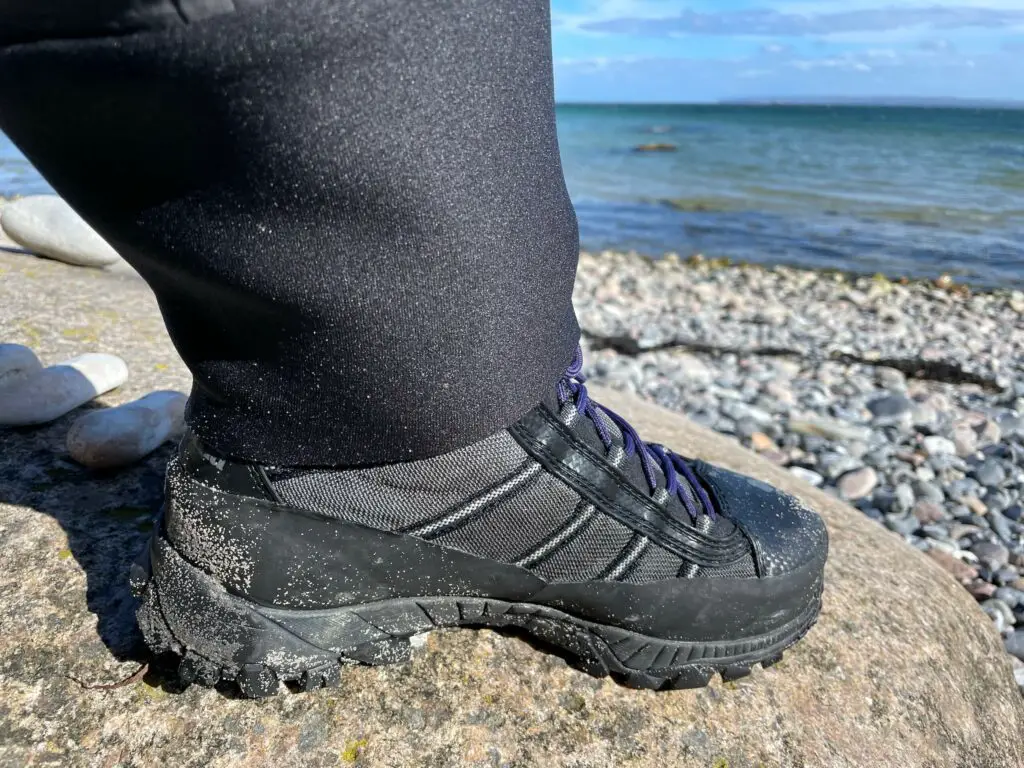
Wading boots are unique footwear crafted specifically for individuals like anglers or adventure enthusiasts who engage in activities necessitating wading through water. Distinct from conventional shoes, wading boots are designed to be worn over stockingfoot waders, offering indispensable support and protection as you tread through different water bodies.
Stockingfoot waders are essential gear extending from your feet to your chest, providing a waterproof barrier that keeps you dry while wading in the water. These are manufactured using materials that are not only waterproof but also breathable, ensuring comfort during prolonged wear. These waders function optimally when coupled with the right pair of wading boots, allowing for a comfortable and protected experience while you’re immersed in your water-based activities.
Understanding the primary function and construction of wading boots is pivotal in making informed sizing choices. Recognizing that these aren’t your average pair of shoes but are engineered for specific, water-based purposes will assist you in approaching the sizing process with a more informed perspective, ensuring that you select a size that will facilitate a comfortable and effective wading experience.
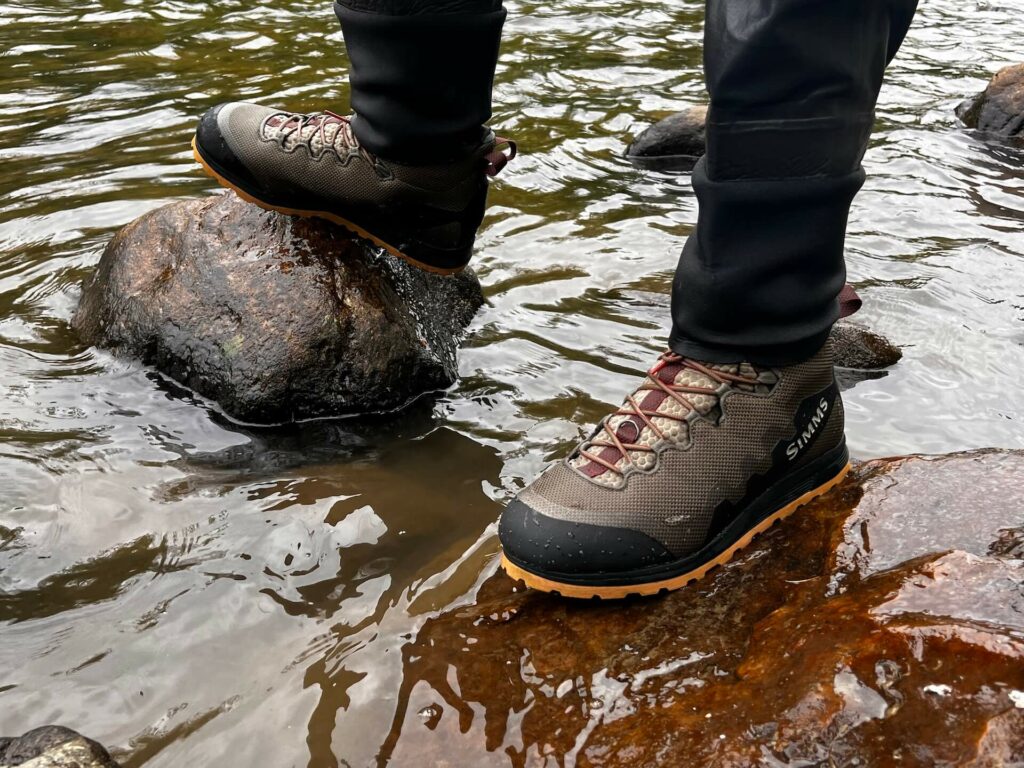
How do I choose the right size for my wading boots?
The journey to acquiring the perfect pair of wading boots commences with selecting a size that’s generally one notch above your regular shoe size. This initial step is crucial, serving as a guideline due to the additional layer contributed by the stockingfoot waders you’ll be wearing beneath the boots. To paint a clearer picture, if your closet is filled with size 10 shoes for daily wear, casting your net with a size 11 when hunting for wading boots is a wise starting point.
This “size-up” guideline isn’t arbitrary; it’s rooted in the understanding of the design and purpose of wading boots. These aren’t mere extensions of your feet but are rather houses designed to accommodate not only your feet but also the extra layer of stockingfoot waders worn underneath.
When you allow for that additional space, you’re paving the way for comfort, facilitating ease of movement for your toes, a factor that is absolutely crucial when maintaining balance and stability is non-negotiable.
Why Size Up?
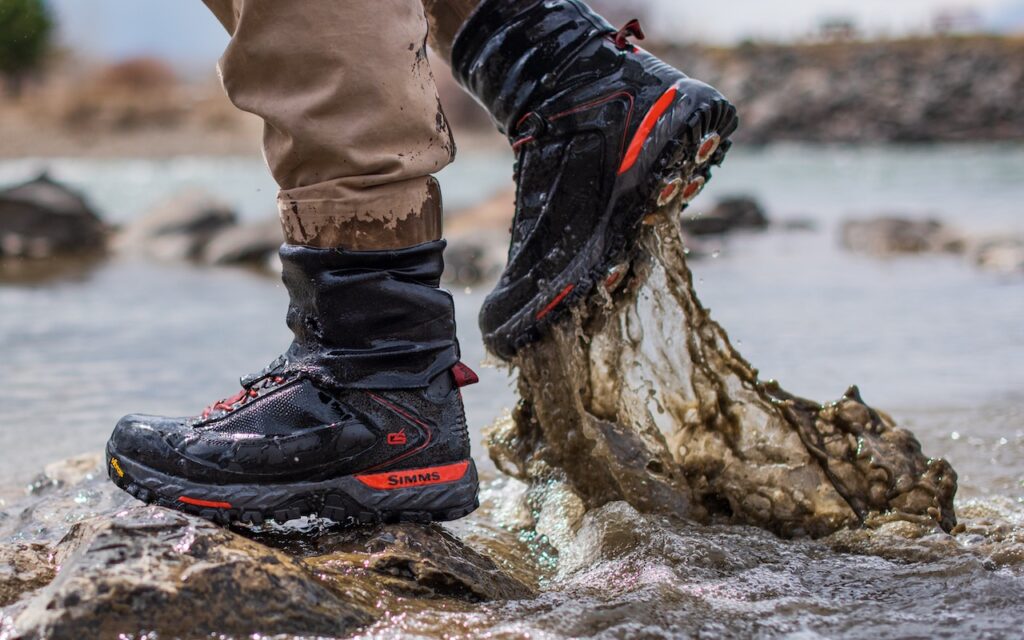
The imperative to size up is ingrained in the very design philosophy and intended function of wading boots. These boots are meticulously crafted, bearing in mind that they aren’t going to envelope just your feet but also need room for the stockingfoot waders. This extra room is not just about physical space; it’s about creating enough room for comfortable toe movement, which plays a pivotal role in ensuring that you can maintain your balance and stability while navigating through aquatic environments.
A pair of boots that’s too tight risks restricting your movement, potentially leading to discomfort and fatigue over time as you move through water. On the flip side, boots that are too loose or oversized won’t provide the snug fit necessary for stable and secure movement, especially on terrains that are inherently slippery and unstable.
Striking the right balance between snug and spacious is critical, and sizing up is a practical rule of thumb that guides you towards making a choice that combines comfort with stability, leading to a smoother and more enjoyable wading experience.
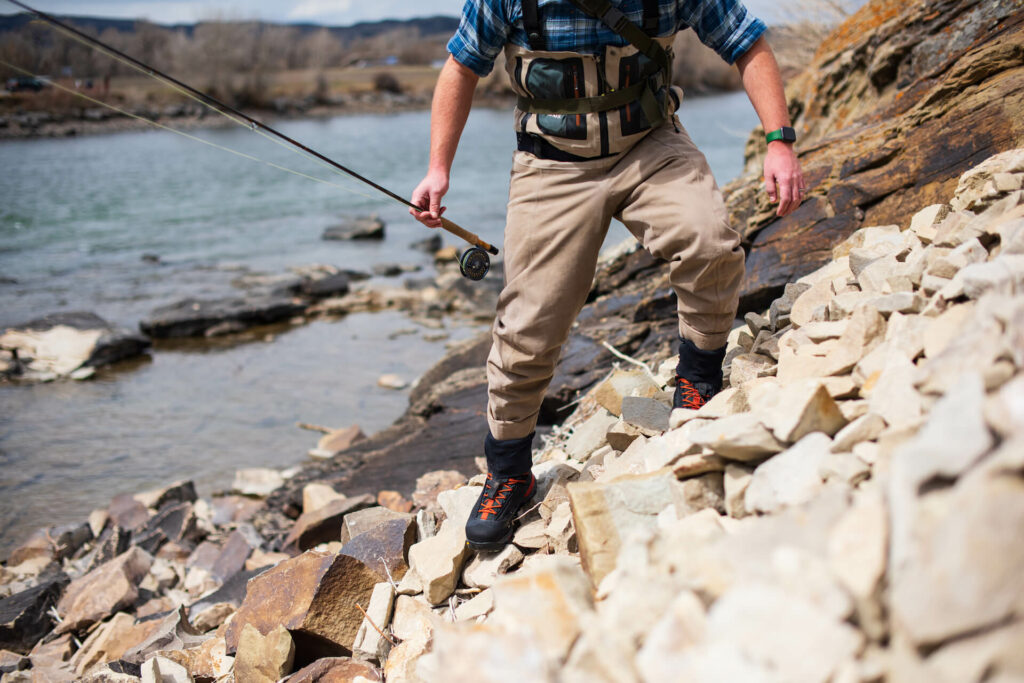
Considering Additional Layers: Neoprene Wading Socks
For those planning on wading in colder water, additional insulation is often necessary. Many anglers opt to wear neoprene wading socks over their stockingfoot waders to keep their feet warm in chilly conditions. Neoprene socks, known for their excellent insulation properties, add extra bulk inside your wading boots. Therefore, if you plan on wearing these socks frequently, you might need to size up again, possibly by an extra half or full size.
Evaluating Your Needs
It’s crucial to take a moment and think about the conditions you’ll most likely encounter while fishing. If you anticipate spending a lot of time in colder environments where extra insulation is essential, planning for space for neoprene socks from the start is a wise move. Different socks and waders vary in thickness, and considering these variations at the outset will help you find boots that offer a comfortable fit regardless of the layers you wear underneath.
Trying Them On: The Ultimate Test
Once you have a sizing baseline, the best way to ensure a perfect fit is to try the boots on with the same layers you plan to wear while fishing. Wear your stockingfoot waders and any additional socks or layers when trying on wading boots. The fit should be snug but not overly tight; you should feel supported without any restriction in movement. And don’t forget to consider the width of the boot as well—some individuals may need to consider wide sizes to get the best and most comfortable fit.
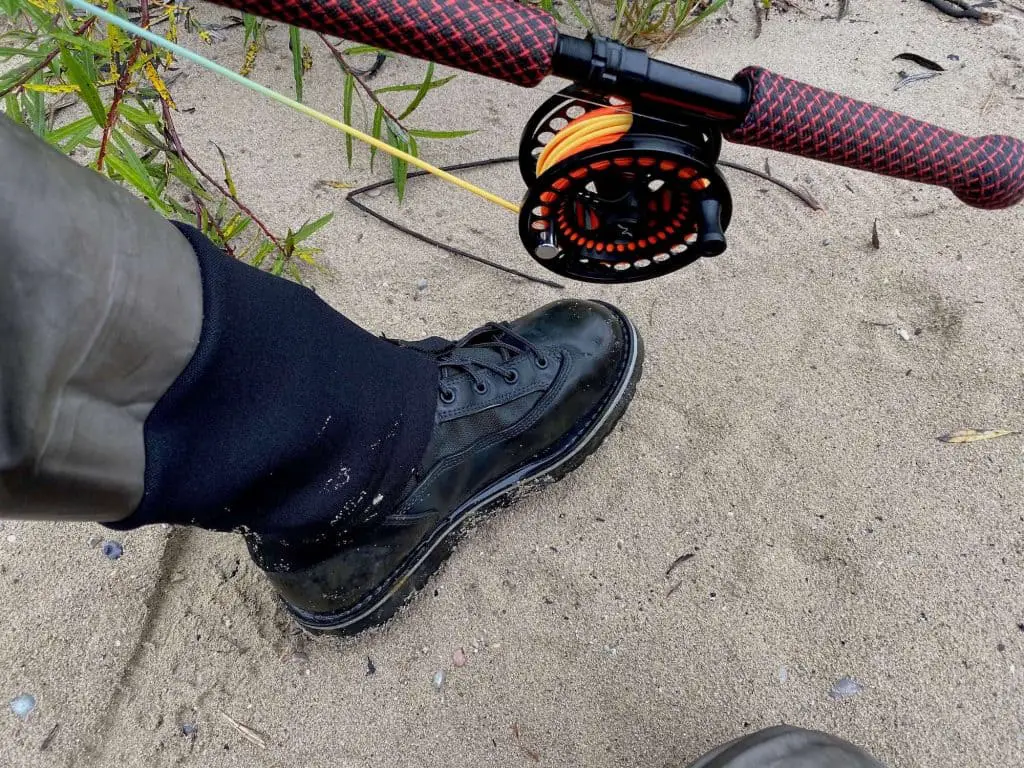
Comfort Is Key
During your fitting, take the boots for a short walk within the store. The boots should offer enough room for your feet to move without sliding or shifting excessively. If you feel any tightness or discomfort in specific areas, consider trying a different size or brand, as these issues may intensify after hours of wading and can lead to blisters or soreness.
Check Online Reviews and Size Guides
Lastly, sizing can differ slightly between different brands. Each brand may have a unique sizing chart, and understanding these variations is crucial for selecting the correct size. Reading online reviews and testimonials from other customers can also offer valuable insights. They can alert you to whether a particular brand’s boots tend to run small, large, or true to their sizing chart, aiding you in making a well-informed decision.
Conclusion on How to Choose the Right Size for Wading Boots
Finding wading boots that fit well is imperative for a comfortable and successful fishing experience. Remember to start by sizing up to accommodate your waders and consider adding even more room if you intend to wear neoprene wading socks. Trying boots on while wearing your typical gear, reading online reviews, and understanding brand-specific sizing charts are also crucial steps in finding the best fit. With all that said, you will be well on your way to selecting wading boots that promise comfort and efficiency for your fishing adventures!
Why can’t I just wear my regular shoes or hiking boots for wading?
Regular shoes and hiking boots aren’t designed to handle prolonged exposure to water. Wading boots, on the other hand, are made specifically for water-based activities, offering the necessary support, grip, and protection to keep you safe and comfortable.
How do I clean and maintain my wading boots?
After each use, rinse your boots thoroughly with fresh water to remove dirt and any aquatic hitchhikers. Let them air dry, preferably out of direct sunlight. From time to time, inspect the soles and laces for wear and replace them if necessary.
Are wading boots and waders sold as a package?
While wading boots and waders can sometimes be bought as a combo, they are often sold separately, allowing you to choose the best size and style for each.
How important is ankle support in wading boots?
Ankle support is crucial, especially if you’re wading in rocky or uneven terrains. Boots with good ankle support can prevent sprains and give you extra stability in the water.
Can I use my wading boots for snow or winter conditions?
While wading boots are insulated and waterproof, they aren’t designed for extremely cold or snowy conditions. If you plan to be in such environments, it’s better to opt for specialized winter boots.
Is there a break-in period for wading boots?
Just like regular shoes, some wading boots might require a short break-in period. Always try them on with your waders before your trip to ensure they fit comfortably.
Remember, having the right gear is key to a safe and enjoyable fishing experience. Make sure to research and invest in the best equipment for your needs.

